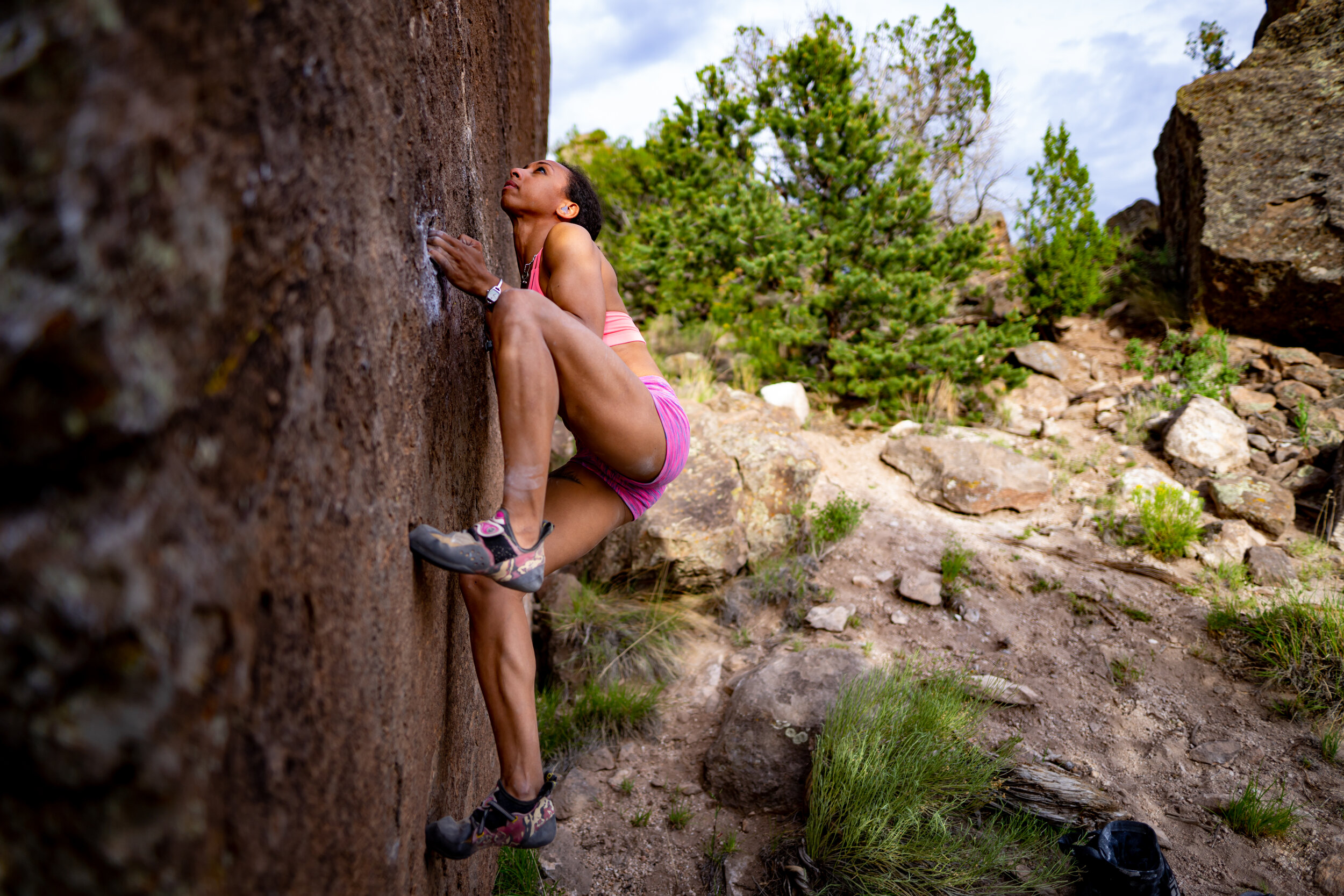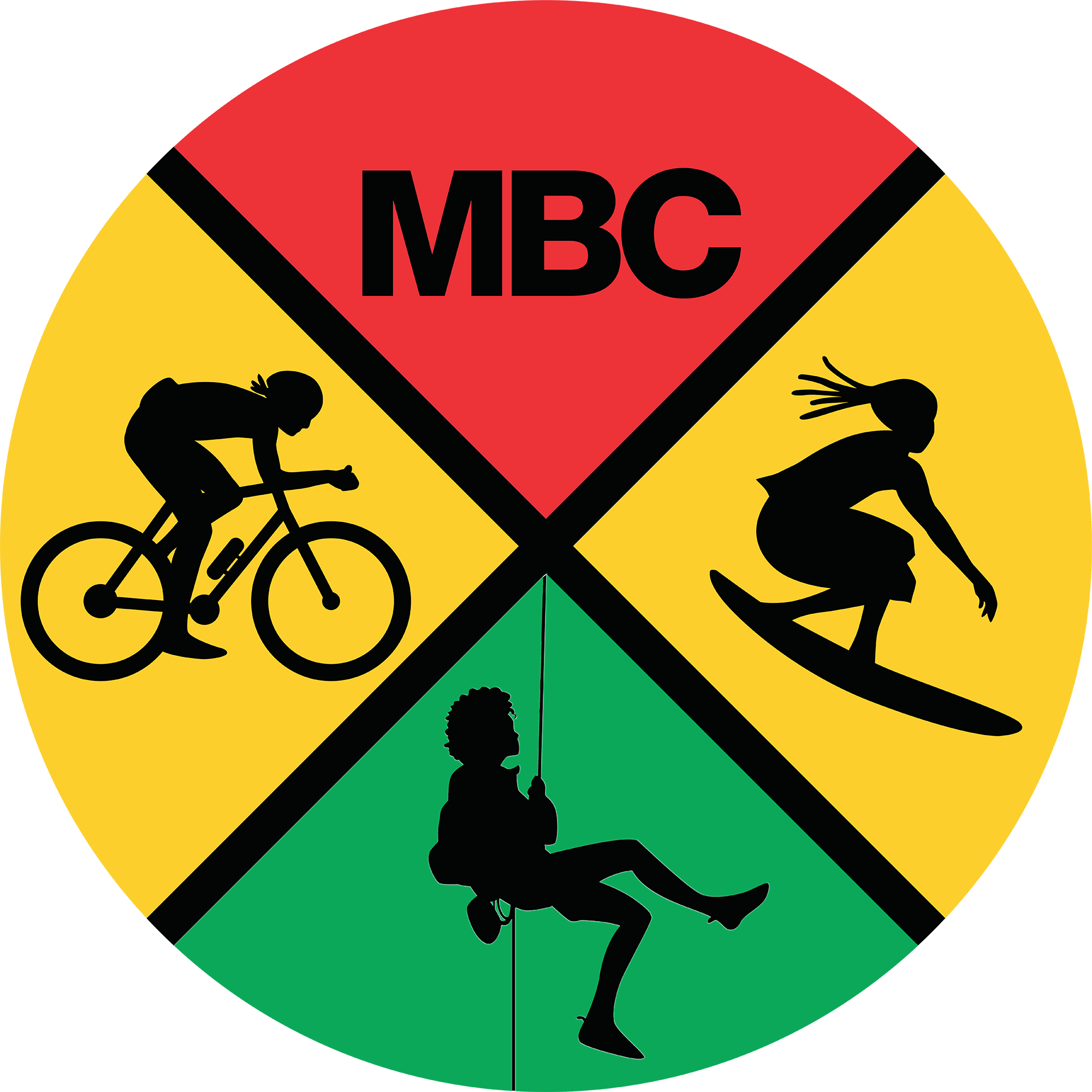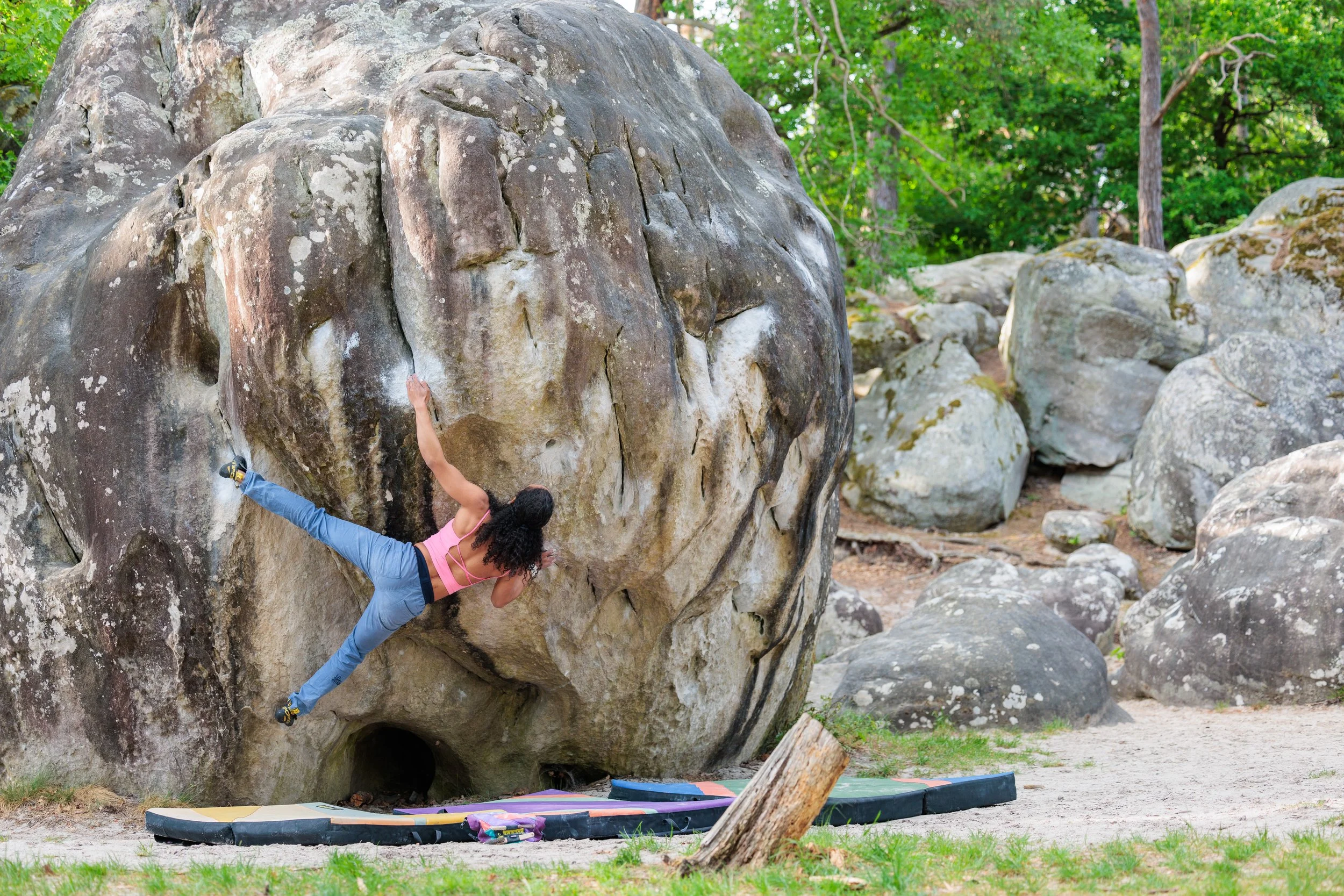4 Exercises to Master the Pistol Squat

Pistol squats are one of my favorite exercises. I’ve always found them to be fun, but they are also a great exercise that translates well to climbing. I’m going to share four exercises that will help you develop your pistol squat. If you have any concerns or questions about your ability to safely complete the exercises, make sure you consult your physician or medical provider first!
But wait, what is a pistol squat? It’s a leg exercise where only one leg is used to complete the squat. It’s also an advanced movement that engages your core, glutes, legs and ankles.
1. AIR SQUAT
Before attempting pistol squats, it’s important to have the basics down. For this exercise, stand with your legs shoulder-width apart and your chest straight up. Then bend at your knees and pretend you are going to sit in a chair. At the bottom of the squat, your thighs should be parallel to the ground. Your arms can be straight out in front of your, for balance.
2. DEEP SQUATS
A deep squat is similar to the air squat. Instead keeping your thighs parallel to the ground, bring your butt as close to the ground as possible without touching it.
3. ASSISTED PISTOL SQUAT
Now it’s time to start using just one leg. Place a chair, block or something that can support your weight if you fall behind you. While balancing on one leg and with your other leg out in front of you, bend at the knee. Try to touch your butt lightly to the chair and stand back up. You can adjust the difficulty of this exercise by changing the height of your chair
4. ROLLING PISTOL SQUAT
Once you are comfortable using the chair, progress to the rolling squat. Start on one leg. Bend at the knee until your butt nearly touches the ground. Then roll on your back and use the momentum of the roll to stand back up. Be careful to not put too much weight on your neck, like I did when I first tried these.
5. LEVEL UP: PISTOL SQUAT
If you have mastered all four of those exercises—congratulations! It’s time to try the pistol squat! Standing on one leg, bend at the knee and keep your core engaged. Go down as far as you can without touching the ground and then stand back up. Personally, I prefer to do these while holding my foot, but that is not necessary to complete these exercises. These can be hard on your joints, so be careful!!
Working full time with a toddler, five cats and a dog didn’t leave me much time to learn a new skill. So I hired a painter, but when he didn’t show up and the welders were starting in three days. I quickly took a crash course on painting. This is what I learned.
I was recently lucky enough to make my first voyage to one of the top climbing destinations in the world: Fontainebleau—or Font. For most of my climbing career, I’d heard stories about the beautiful sandstone boulders and the flat, sandy landings. I knew I had to experience it for myself one day.
But planning a climbing trip to a foreign country can feel overwhelming and even a little scary, especially if it’s your first time. To help make your experience smoother and more enjoyable, here are some tips I picked up along the way.
I’ve been seeing chiros since I was 12 to help manage my Ehler-Danlos syndrome, a hypermobility disorder that makes me more susceptible to injury and joint dislocations. They have been a life saver for me and the only reason I’ve been able to maintain my athletic abilities. Since I’ve moved quite a bit over the past 25 years, I’ve had to regularly find a new chiropractor. Here are a few tips to help you find the best chiropractor for you.
Recently, there was a good weather window at Hueco Tanks- some cool weather in April. I really wanted to take advantage of this so I decided that my nearly 2 year old son, Hans Sven would join me! It would be our first mother-son trip. My husband was nervous to be separated from him, and wondered how would I keep him safe while climbing and hiking. Not afraid of a challenge, I made a plan and was excited to show Hans Sven my favorite place in the entire world!
This fall, I planned a trip to Hueco for a friend’s first outdoor climbing trip. We were all very excited. We drove to the park and at the ranger station, there was a sign out front- “NO CLIMBING TODAY.” We were devastated.
So, what were going to do?? Luckily I remembered, 8 years earlier that I climbed a cool cave in Las Cruces, New Mexico. I told everyone, No need to despair, onto Las Cruces we go!
A major benefit of being a boulderer is that you have the freedom to do it anytime you want. But it can be intimidating to be out in nature alone and it’s inherently risker than climbing with others. I have five tips to make it safer, so you can keep on sending!
Hiking used to be a solo activity but now, my son has started joining me and my dog Merle on our outdoor adventures! At 15 months, he can hike in the desert terrain for 30 minutes on his own! But it didn’t start out that way.
“What do I wear?” is the most common question I get asked by new climbers going to the gym.
Now that I’m exactly six months post-op from lower back spinal fusion surgery, my workouts are shifting. Initially, I stuck to body weight and light weight resistance to keep pressure off the bone. Now, I’m finally getting back to heavier weights and more of my pre-surgery workouts. So with that my series on spinal fusion recovery comes to end! But don’t despair, I have a few last exercises to share!
Now, I’m nearly four months post-op from lower back spinal fusion surgery. Sneezing stills hurt a ton, but I’ve started climbing again and taking small falls. And of course, I’m still on that rehab train!! One of the best exercise progressions I’ve done so far are squats. Here are five variations of squats that have proven useful for my recovery.
In 2019, I suffered a devastating spinal injury that left me with weak noodles for legs. In November 2023, I finally bit the bullet and had surgery. The road to recovery has been difficult. I’m going to share my first progression of rehab exercises—hip bridges. Remember, only try these if you’ve been cleared by your doctor and physical therapist.
Climbers are known to have rough skin and calluses. But when I shake people’s hands, they’re often surprised at how relatively soft they are. My soft skin is still tough skin; I can climb outside five days a week with no pain and no flappers!! Here are some tips I’ve picked up over the years to maintain my tough skin.
The BFL Combine is hands down the most unique climbing competition out there. Half weight lifting and half climbing, it is based on the NFL and NBA combines, where athletes showcase their athletic and mental skills to pro scouts. The BFL Combine started in 2021, and has attracted world class climbers, including Natalia Grossman, Zach Galla, and Drew Ruana.
When you start your climbing journey, there is an overwhelming amount of information to learn! You have to learn safety, new lingo, new muscle use, new movement and more. One of the critical pieces of being a successful climber is understanding the hold types. Knowing the names and how to use different types of hold will help you read the climb before you hop on it and will help you communicate to other climbers. In this post, I go over the basic hold types.
You may see climbing boards in your gym or while scrolling on Instagram and wonder, “What’s all the rage?” Or you may think, “Those board are only for the pros!” Well, I’m here to tell you board climbing can be for everyone and it’s great for training and measuring progress.
















Building a home gym is a monumental task! Once the climbing wall is built, you’d think the biggest hurdle is over. But a safe landing area is just as important, and can be just as overwhelming. There are many options for foam and foam coverings, making it difficult to know which is right for a climbing wall. I spent weeks reading about foam, cold-calling foam companies, and driving around to different fabric stores learning about vinyl coverings. Here is my journey of building a safe landing!